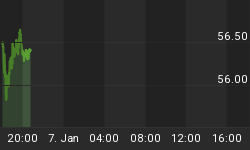Many oil companies had trimmed their budgets heading into 2015 to deal with lower oil prices. But the rebound in April and May to $60 per barrel from the mid-$40s suggested that the severe drop was merely temporary.
But the collapse of prices in July - owing to the Iran nuclear deal, an ongoing production surplus, and economic and financial concerns in Greece and China - have darkened the mood. Now a prevailing sense that oil prices may stay lower for longer has hit the markets.
Oil futures for delivery in December 2020 are currently trading $8 lower than they were at the beginning of this year even while immediate spot prices are $4 higher today. In other words, oil traders are now feeling much gloomier about oil prices several years out than they were at the beginning of 2015.
The growing acceptance that oil prices could stay lower for longer will kick off a fresh round of cuts in spending and workforces for the oil industry.
"It's a monumental challenge to offset the impact of a 50% drop in oil price," Fadel Gheit, an analyst with Oppenheimer & Co., told the WSJ. "The priorities have shifted completely. The priority now is to discontinue budget spending. The priority is to live within your means. Forget about growth. They are now in survival mode."
And many companies are also recalculating the oil price needed for new drilling projects to make financial sense. For example, according to the Wall Street Journal, BP is assuming an oil price of $60 per barrel moving forward. Royal Dutch Shell is a little more pessimistic, using $50 per barrel as their projection. For now, projects that need $100+ per barrel will be put on ice indefinitely. The oil majors have cancelled or delayed a combined $200 billion in new projects as they seek to rein in costs, according to Wood Mackenzie.
But the delay of 46 major oil and gas projects that have 20 billion barrels of oil equivalent in reserves mean that global production several years from now could be much lower than anticipated. Due to long lead times, decisions made today will impact the world's production profile towards the end of this decade and into the 2020s. It makes sense for companies to cut today, but collectively that could lead to much lower supplies in the future.
That is a problem because the oil majors were struggling to boost oil production even when oil prices were high. 2014 was one of the worst in over six decades for major new oil discoveries, even though oil prices were high for most of the year. Despite high levels of spending, exploration companies are simply finding fewer and fewer reserves of oil.
Shale production has surged in recent years, but it could be a fleeting phenomenon. Precipitous decline rates from shale wells mean that much of a well's lifetime production occurs within the first year or two. Moreover, after the best spots are drilled, the shale revolution could start to come to a close. The IEA predicts that U.S. shale will plateau and begin to decline in the 2020s. That means it would not be able to keep up with rising demand. Add in the fact that oil wells around the world suffer from natural decline rates on the order of 5 percent per year (with very wide variation), and it becomes clear that major new sources of oil will need to come online.
One other factor that could tighten oil markets over the long-term is the fact that Saudi Arabia has churned through much of its spare capacity. As one of the only countries that can ramp up latent oil capacity within just a few weeks, Saudi Arabia's spare capacity is crucial to world oil market stability.
Many energy analysts like to compare the current oil bust to the one that occurred in the 1980s. But one of the major differences between the two events is that, in addition to the glut of oil supplies in the 1980s, was the fact that Saudi Arabia dramatically reduced its output from 10 million barrels per day (mb/d) down to less than 4 mb/d in response. As a result, on top of the fact that the world was awash in oil throughout the 1980s and 1990s, there were also several million barrels per day of spare capacity sitting on the sidelines, meaning there was virtually no chance of a price spike for more than a decade.
That is no longer the case. Today OPEC has only 1.6 mb/d of spare capacity, the lowest level since before the 2008 financial crisis. So while Saudi Arabia is currently flooding the market with crude, it has exhausted its spare capacity, leaving few tools to come to the rescue in a pinch.
That brings us back to the large spending cuts the oil majors are undertaking. With spare capacity shot and major new sources of oil not coming online in a few years, the world may end up struggling to meet rising oil demand. That could cause oil prices to spike.
Source: http://oilprice.com/Energy/Oil-Prices/Global-Oil-Supply-More-Fragile-Than-You-Think.html
By Nick Cunningham of Oilprice.com
















